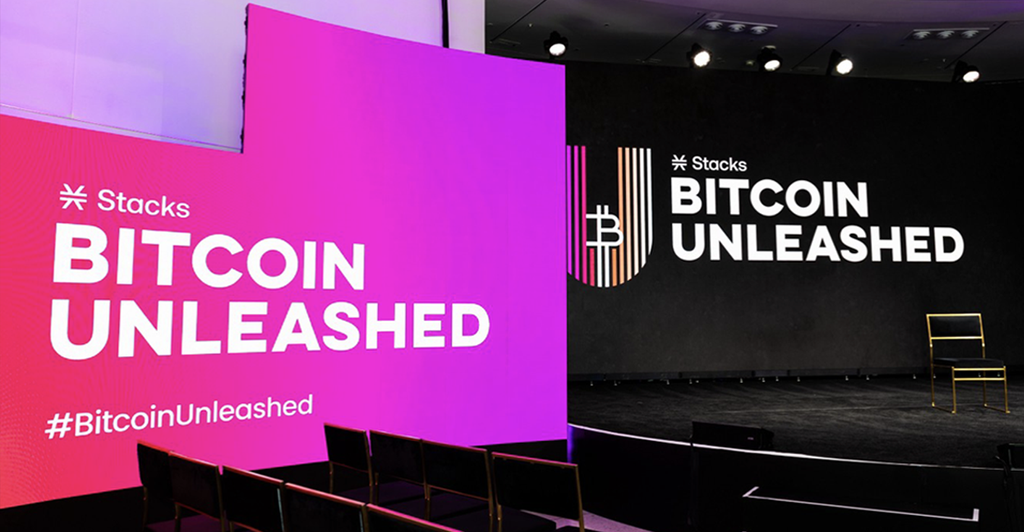
Stacks BITCOIN UNLEASHED Summit Recap
Experiencing the Bitcoin-based Web 3.0 ecosystem and culture
BITCOIN UNLEASHED, an annual event of Stacks, a decentralized network built on Bitcoin, was held on April 5 to 7 in Miami, USA
As one can easily assume from the event’s title “BITCOIN UNLEASHED”, the event was designed to deliver the vision and the passion of the Stacks community to build applications and smart contracts for a more mature bitcoin ecosystem.
The event offered sessions that discussed how to develop applications in the Stacks ecosystem and introduced the current DeFi, DAO and NFT projects in the Stacks ecosystem.
Stacks foundation, Hiro, a company that makes tools for Stacks developers, Trust Machine, a company founded by Stacks founder Muneeb Ali and develops Stacks and Bitcoin ecosystems, and teams that develop various DAO platforms, NFT and DeFi attended the event and shared their development progress and new DApps.
The presentations at the event consisted of those that introduced the ecosystem and those for the developers. The developer tracks were mainly for the Stacks-based service developers and the ecosystem track featured presentations for investors and ordinary attendees.
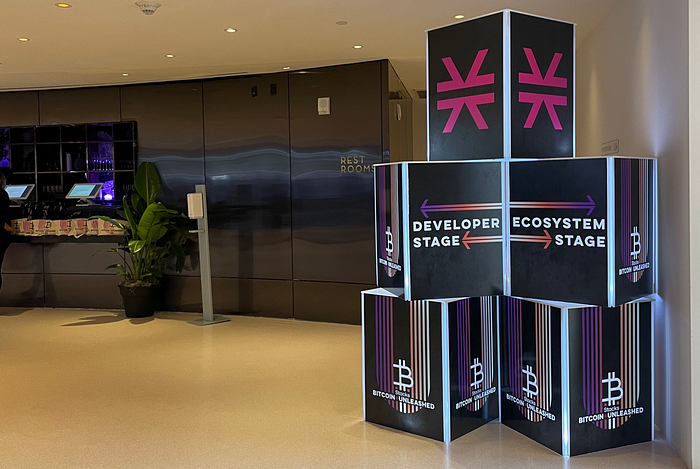
The biggest topic of this event was the upcoming major updates of Stacks chain.
Major discussions involved how to scale up the Stacks ecosystem using Hyperchain, a Stacks layer 2 scalability solution, the compatibility with the chain based on the EVM (Ethereum based Virtual Machine) based on the hyperchain, and ensuring rich asset liquidity through Stacks bridge.
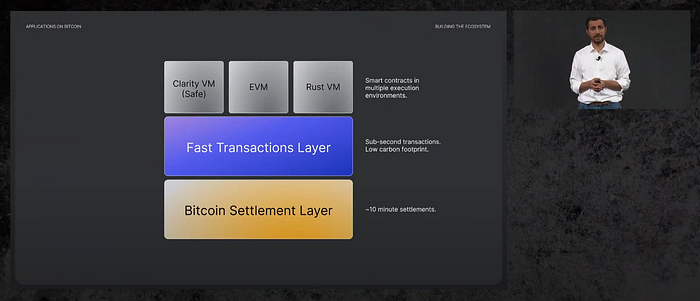
“People’s trust on Bitcoin Network is the most robust as it is the most decentralized chain with excellent stability.”, said Muneeb Ali, adding “Bitcoin is the most stable infrastructure of Web 3 so it can work as the network’s underlying layer”. Also, he stated “Stacks, by utilizing this Bitcoin network as the underlying layer, can ensure stability and build a Bitcoin-based smart contract that provides various functionality.” adding, “Bitcoin users can also leverage the liquidity of Bitcoin through Stacks.”

Meanwhile, Stacks is slow as it operates on the Bitcoin network. To complement this, Muneeb Ali said “Within this year, we will build a hyperchain that only processes transactions of Stacks network” and he added “When the hyperchain is established, it will operate in the same speed as Solana and Avalanche, other blockchain platforms.”
Hyperchain, not only provides high speed but also supports the virtual machine of Clarity, a language with which Stacks was developed, to provide compatibility with EVM and Rust virtual machine. Regarding this, Muneeb Ail mentioned, “Through hyperchain, smart contracts of Ethereum, Solana, etc. are supported and various networks’ liquidity are ensured, allowing the Stacks ecosystem expand much more easily.”
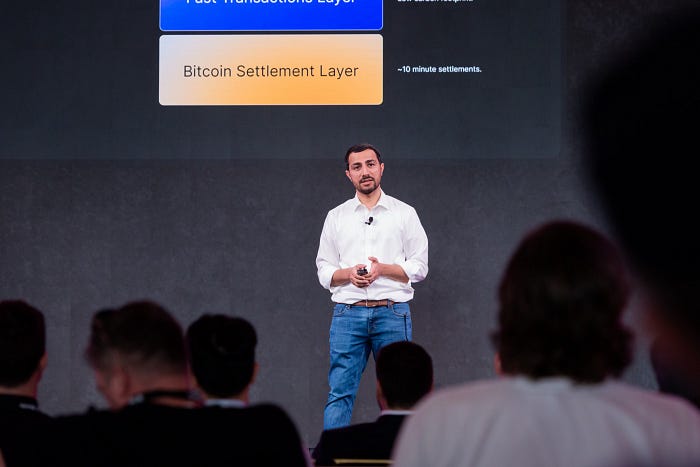
The session that shared Stacks’ major updates received a lot of attention, and other sessions that discussed the Stacks ecosystem to allow existing blockchain developers to easily access Stacks development environment were popular.
From my previous experience of developing a service built on Stacks, I know that Clarity, a programming language for Stacks is quite complex compared to other programming languages. The grammar for the Clarity might not be familiar for many, but it is safe and increases the possibility to predict the smart contracts’ operation, which can reduce bugs.
I was hoping for a session that could lower the entry barrier to become a developer for those who think it is difficult, and Stacks Foundation and Hiro, as if they already understood the needs, organized such sessions. Maybe this is why the event had Ecosystem track that had overview and introductory programs and Developer track for the general blockchain developers.
The developer sessions discussed topics ranging from how to utilize Stacks API so that blockchain developers can easily enter the Stack ecosystem to the introduction of Clarity programming language.

Marvin Janssen, a technology lead at Stacks Foundation, explained why Clarity can become the next generation programming language for smart contracts. He summarized the advantages of Clarity over Solidity, a progamming language that runs on Ethereum, into three key points
First, Clarity deletes phrases that are not vague, meaning that developers can accurately predict how smart contracts are implemented. Second, a user can add a condition to the transaction which can prevent unexpected token transfer and therefore it ensures safety. Third, Clarity runs without a compiler and is delivered to Stacks chain upon the distribution of smart contracts, which allows anyone to view the code with transparency.

Also, Sarala, Hiro’s engineering director, introduced the recent project that reduced the fees on Stacks chain. Sarala explained that the team established a function that predicts the amount of fees on the Stacks API and Hiro wallet to reduce the Stacks chain fees.
Stacks API endpoints allow users to view transaction data from the previous blocks and divide the calculated fee rate by percentiles to provide low, medium, and high fee options for fifth, 50th, and 95th percentiles, respectively. “This improvement in measuring fees was distributed to the Stacks 2.05.0.1.0 network in early February and applied to Hiro Wallet 3.30,” Sarala said. And added, “In the future, we will add fee options for real-time competition of transactions by calculating transaction fee rates in Mempool before miners create the next block as well as blocks of the mainnet chain.”

In addition, there were many interesting projects being developed on the Stacks blockchain. Stacker DAO which facilitates the establishment of the DAO community was one of them.
Orlando, a co-founder of StackerDAO introduced various functions including the issuance of DAO NFT on Stacks chain, setting and managing whitelist, making a proposal for the community and voting through a demo version. Orlando said, “StackerDAO will be released soon and I believe it will help build a community easily so there will be more DAOs coming in the Stacks ecosystem.”
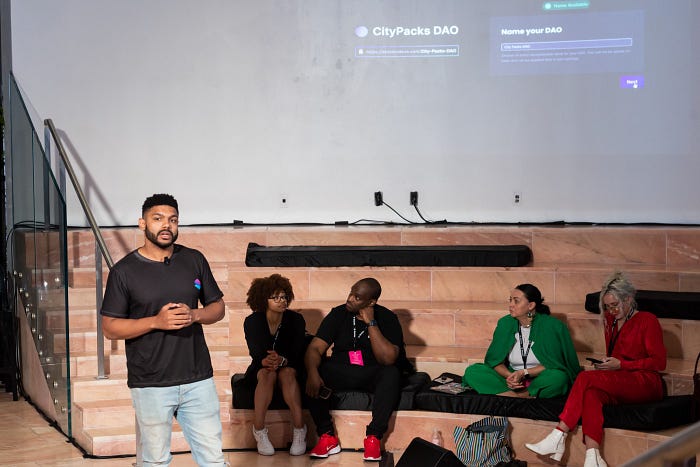
At the event I had a chance to have quick meetings with various teams, one of them was with Sidney who developed Alex, a DeFi project built on Stacks. “We are developing auto-ALEX, an auto-compounding token that provides automatic harvesting and staking for Alex,” Sydney said. “We are in talks with various projects for Initial DEX Offering (IDO).”
This event served as a chance to meet various teams in the Stacks ecosystem including StackerDAO and Console which are DAO platforms, Alex and Arkadico, Stacks DeFi services as well as NFT marketplaces STXNFT and Byzantion.
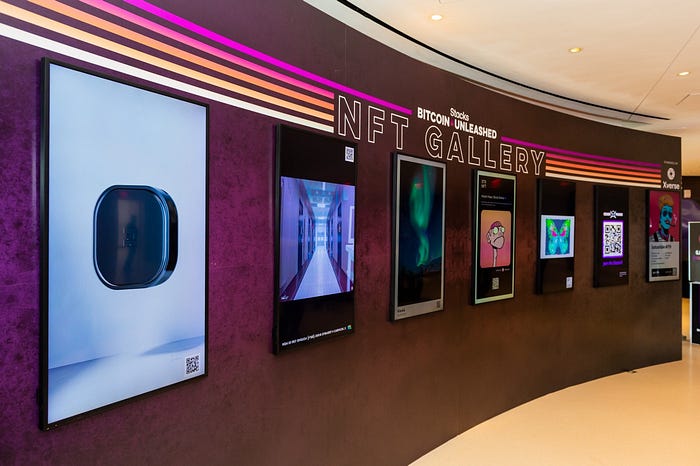
Many NFT artists interested in Stacks and want to join the ecosystem also attended. The Stacks Foundation is supporting NFT artists through the NFT support program “The Mintery,” so it is expected that there will be more NFT projects coming up in the future.
I recently switched from a Web 2.0 software giant to Web 3.0 as I was fascinated by Stacks’ technology and philosophy. The event was more meaningful because it was the first blockchain event I attended since I moved to a new company. I was able to see and feel that all members of the Stacks community were moving forward with a shared vision to expand the potential of the Bitcoin network through the Stacks chain.
Talking to other developers from various teams, including the Stacks Foundation and the Hiro team at the event, I, as a developer, could also feel the passion and energy of those devoted to developing the Stacks ecosystem.
